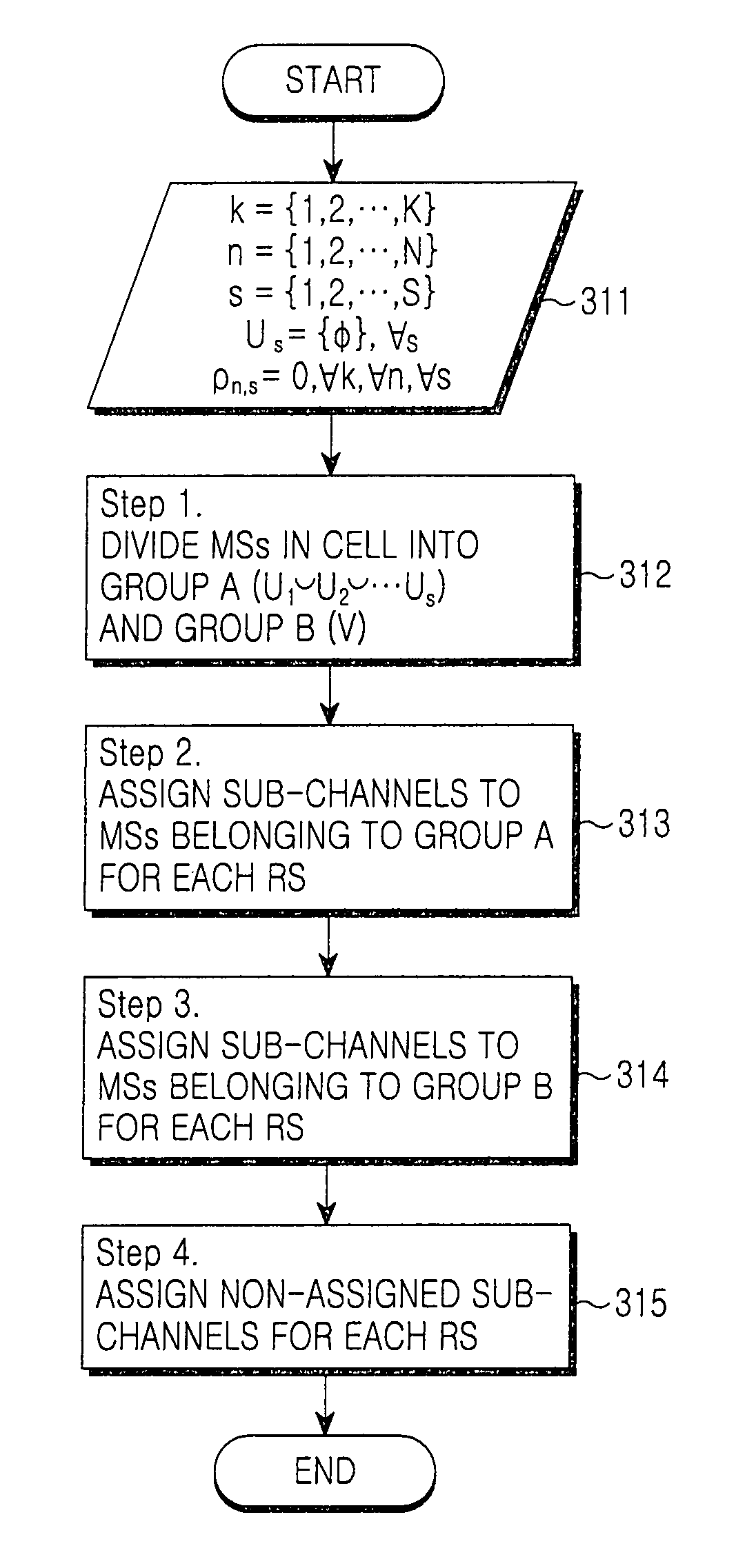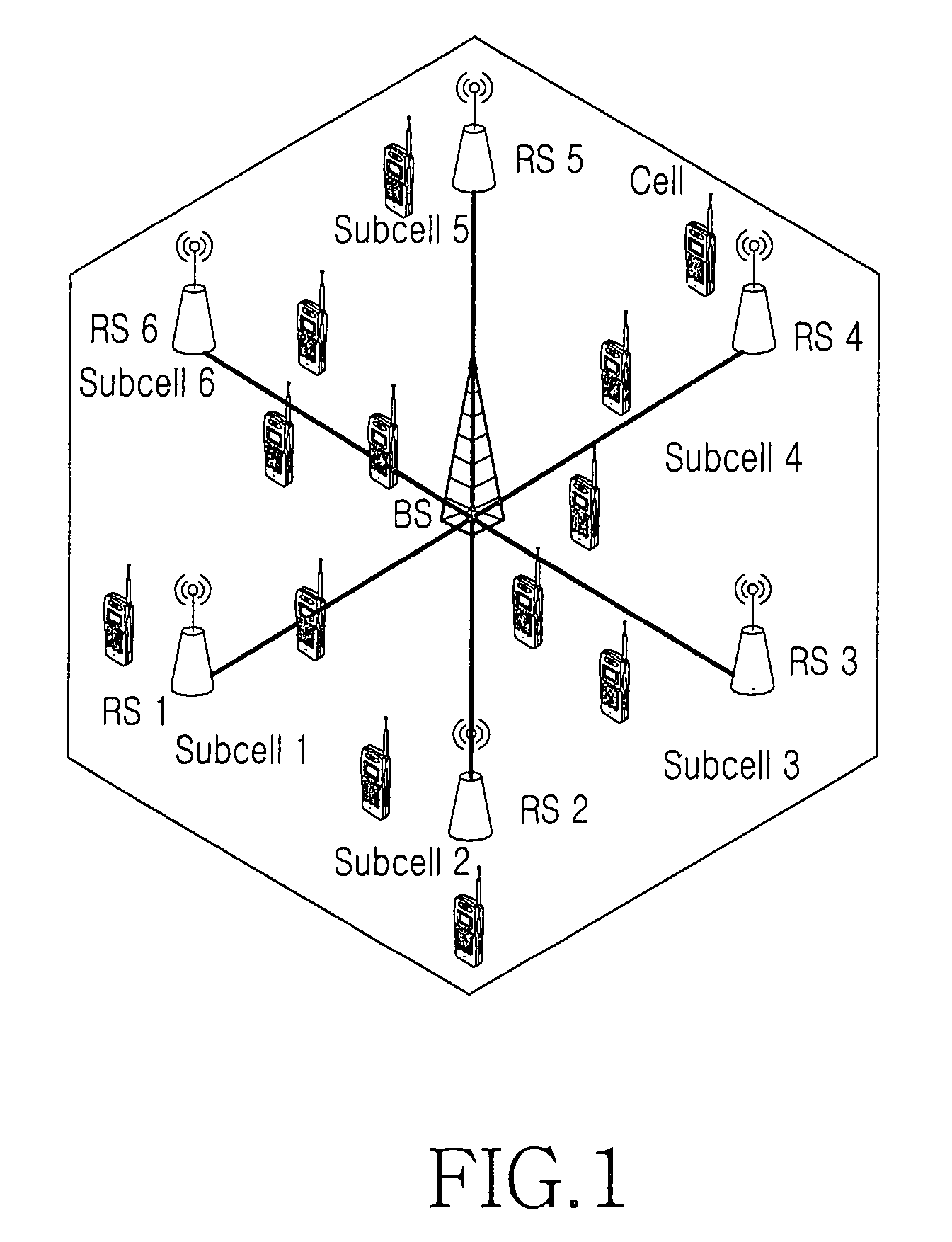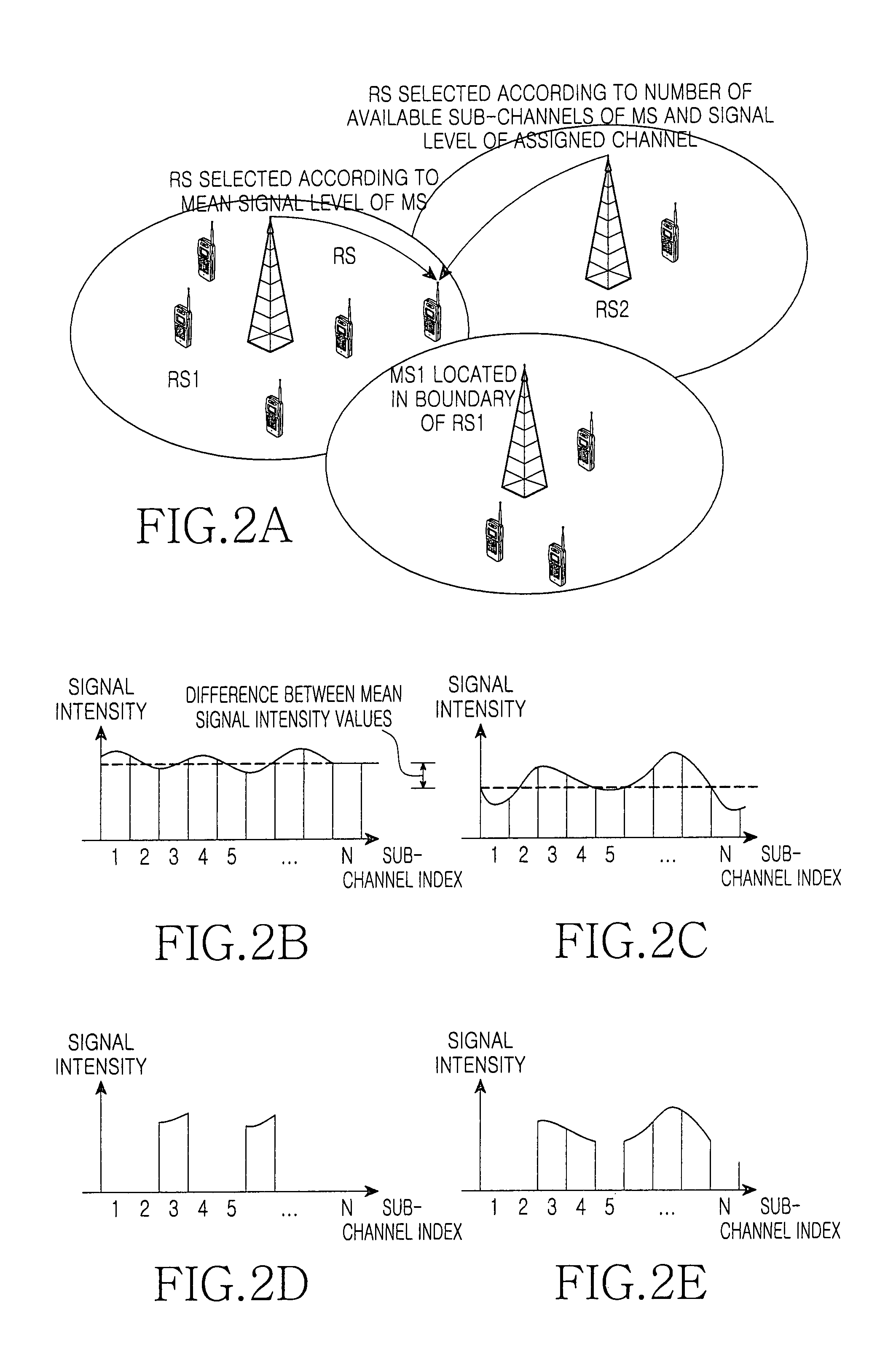Method and system for assigning radio resources in cellular system using wired relay stations
a radio resource and relay station technology, applied in the field of radio resource management (rrm) of a cellular communication system, can solve the problems of reducing mss, reducing qos, and reducing so as to improve qos, improve qos, and reduce non-operational probability of mss.
- Summary
- Abstract
- Description
- Claims
- Application Information
AI Technical Summary
Benefits of technology
Problems solved by technology
Method used
Image
Examples
Embodiment Construction
[0018]Now, embodiments of the present invention will be described herein below with reference to the accompanying drawings. The invention may, however, be embodied in many different forms and should not be construed as being limited to the embodiments set forth herein; rather, these embodiments are provided so that this disclosure will be thorough and complete, and will fully convey the concept of the invention to those skilled in the art.
[0019]FIG. 1 is a configuration of a cellular system using wired Relay Stations (RSs) according to an exemplary embodiment of the present invention. As illustrated in FIG. 1, a single cell can be constituted of a single Base Station (BS) and a number of wired RSs, for example 6, each RS covering its sub-cell area. In the wired RS system, a Mobile Station (MS) close to the BS receives a service from the BS, and a MS located in a cell boundary, i.e. having a relatively low reception Signal to Interference pulse Noise Ratio (SINR), receives a service ...
PUM
 Login to View More
Login to View More Abstract
Description
Claims
Application Information
 Login to View More
Login to View More - R&D
- Intellectual Property
- Life Sciences
- Materials
- Tech Scout
- Unparalleled Data Quality
- Higher Quality Content
- 60% Fewer Hallucinations
Browse by: Latest US Patents, China's latest patents, Technical Efficacy Thesaurus, Application Domain, Technology Topic, Popular Technical Reports.
© 2025 PatSnap. All rights reserved.Legal|Privacy policy|Modern Slavery Act Transparency Statement|Sitemap|About US| Contact US: help@patsnap.com



